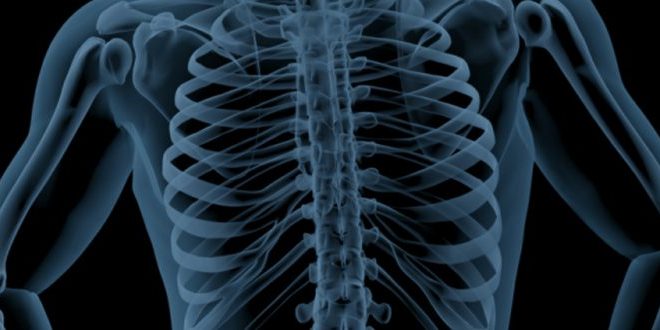Chiropractic Approaches to Muscle Adhesions
Muscle adhesions are restrictive bands of scar-like tissue that develop from injury, overuse, or poor posture, binding layers that should glide freely and causing pain, stiffness, and compensatory movement patterns. Chiropractic approaches target both the fascia and joints: soft-tissue methods like Active Release Technique, IASTM, myofascial release, and trigger‑point therapy break up adhesions, while adjustments restore proper alignment. A fascia‑mapping assessment pinpoints root tensions, guiding a customized treatment plan. Together, these techniques unlock lasting mobility, reduce pain, and enhance overall function.

What Are Muscle Adhesions?
Muscle adhesions are dense, scar-like bands of tissue that form when your body tries to protect and heal itself — but sometimes that protection becomes a problem.
These adhesions develop in your muscles, tendons, fascia, or between tissue layers as a result of injury, inflammation, or overuse. While scar tissue is part of the body’s natural healing process, it can form in ways that bind tissues together that are supposed to move independently. The result? Movement becomes restricted, uncomfortable, or downright painful.
How Do Muscle Adhesions Form?
Adhesions don’t always happen from a dramatic injury — more often, they build up slowly from everyday habits:
- Repetitive Microtrauma: Movements done over and over again — typing, running, lifting, even poor sleeping positions — create tiny tears that the body “patches” with scar tissue.
- Poor Posture or Biomechanics: Holding the same slouched position day after day causes uneven stress on muscles and fascia, which respond by laying down adhesions.
- Post-Surgical Healing: After surgery, the body floods the area with scar tissue to repair damage — but without guided therapy, that scar can become restrictive and painful.
How Do Adhesions Affect Your Body?
- Restrict Motion: Adhesions glue muscles and fascia together, preventing the smooth glide needed for healthy movement.
- Cause Pain or Weakness: As tissues get pulled or compressed unnaturally, they can trigger chronic pain, weakness, or fatigue.
- Alter Movement Patterns: When one area can’t move well, your body compensates — leading to further imbalance and dysfunction.
- Pull Joints Out of Alignment: Tight or shortened tissues can tug on joints, making chiropractic adjustments harder to hold and increasing the risk of reinjury.
The Fascia Connection
Fascia is a thin, strong, connective tissue that wraps around every muscle, organ, bone, and nerve in your body. Think of it like a 3D web — when one part of the web tightens or sticks, the tension spreads across the system. That’s why a restriction in your hip fascia might be affecting your shoulder posture, or why a car accident years ago could still be pulling on your spine today.
How Fascia Adhesions Affect You
- Pull Joints Out of Alignment: When fascia is restricted, it can shorten and tighten, dragging joints into poor positions — making adjustments harder to hold.
- Trap Nerves: Fascial adhesions can compress or irritate nearby nerves, leading to pain, tingling, or weakness.
- Limit Movement: Even if your muscles are strong and your joints are mobile, tight fascia can create a straitjacket-like effect, reducing flexibility and efficiency.
The Solution: Treating Fascia and Structure Together
Chiropractic adjustments restore joint motion, while fascia release techniques like ART, myofascial therapy, and IASTM target the underlying tension that’s pulling things out of place.
The result?
- Deeper, longer-lasting relief
- Improved posture and performance
- A body that moves the way it was designed to
Fascia Mapping at Mountain Movement
We take fascia seriously — so seriously, we’ve built fascia mapping into our patient assessments. This system identifies:
- The origin point of tension, not just where it hurts
- How your fascia patterns relate to your movement issues
- The best technique to restore balance and flow in your system
This fascia-aware lens is part of our Day Method — a proven approach that combines chiropractic care, soft tissue release, and movement retraining to restore full-body function from the inside out. Because when you treat the fascia, everything else begins to fall back into place.
Techniques Chiropractors Use for Muscle Adhesions
Active Release Technique (ART)
ART is one of the most effective hands-on methods for releasing muscle adhesions. Developed by Dr. Michael Leahy, it’s a movement-based soft tissue therapy designed to identify and break up dense, restrictive scar tissue in muscles, tendons, ligaments, fascia, and even nerve sheaths.
How it works:
- The practitioner uses precise manual pressure to locate areas of tension and adhesion.
- You then move the affected body part through a specific range of motion.
- This dynamic release breaks up stuck tissue, restores glide between layers, and improves blood flow and nerve communication.
ART is especially effective for repetitive strain injuries, postural problems, and chronic tightness that hasn’t responded to stretching or massage.
Instrument-Assisted Soft Tissue Mobilization (IASTM)
Sometimes, the body needs a little extra mechanical help. That’s where IASTM comes in — a technique that uses specialized tools (like Graston instruments) to target and break up stubborn fascial restrictions.
How it works:
- The provider uses smooth, stainless steel tools to glide over the skin and “scrape” areas of restriction.
- This creates controlled microtrauma that stimulates the body’s natural healing response.
- It increases circulation, releases adhered fascia, and encourages remodeling of scar tissue.
IASTM is ideal for dense or deep-seated adhesions, post-surgical scarring, and chronic tension that has become “stuck” over time.
Manual Myofascial Release
Myofascial release is a hands-on technique that targets the fascia — the connective tissue that surrounds muscles and organs. When fascia becomes tight or bound down, it limits movement and pulls on surrounding structures.
How it works:
- The practitioner uses sustained, direct pressure on specific tissue layers.
- The goal is to stretch, soften, and free up the fascia so it can move independently again.
- This technique is especially helpful for deep-seated restrictions and whole-body patterns of tension.
It’s slow, precise, and incredibly effective for conditions like frozen shoulder, hip tightness, and chronic postural stress.
Trigger Point Therapy
Trigger points are knots or hyperirritable spots in muscle tissue that refer pain to other parts of the body. They’re often responsible for pain patterns that seem disconnected from the source — like headaches caused by tight neck muscles or shoulder pain rooted in the chest wall.
How it works:
- The practitioner locates the trigger point and applies focused pressure.
- This encourages the muscle to relax and helps disrupt the pain-spasm cycle.
- Patients often experience immediate relief and improved range of motion.
Trigger point therapy is often integrated with ART and chiropractic adjustments for faster resolution of stubborn pain zones.
Chiropractic Adjustments
Once the soft tissue is freed, the body is primed for proper alignment. That’s where the chiropractic adjustment comes in:
- Realigns joints that may have been pulled out of place by muscle tension or fascial adhesions.
- Resets the nervous system, enhancing communication between brain and body.
- Restores balance and stability, allowing the body to hold its new, improved posture and movement patterns longer.
At Mountain Movement, we use adjustments as part of a larger plan — not the only solution, but the final step in unlocking function after the soft tissue is addressed.
Who Benefits from This Approach?
Athletes and Weekend Warriors
Whether you're training for a race or just love your weekend CrossFit sessions, athletic movement puts high demand on your soft tissues. Repetitive strain, microtrauma, and performance plateaus often trace back to adhesions pulling your joints out of rhythm. Our approach helps:
- Improve performance
- Prevent injury
- Restore clean movement patterns
Desk Workers with Postural Strain
Sitting for long hours leads to chronic tension in the neck, shoulders, and hips — and over time, that creates adhesions and poor spinal alignment. With our fascia-focused care, we target the source of stiffness so you can:
- Improve posture
- Reduce headaches and shoulder pain
- Restore energy and circulation
Individuals with Old Injuries or Scar Tissue
Injuries may heal, but they often leave behind residual scar tissue and compensatory movement patterns. These adhesions can show up months — even years — later as new pain or instability. Our muscle mapping helps:
- Identify hidden restrictions
- Free up stuck movement
- Prevent reinjury
Post-Surgical Patients in Rehab
Surgery saves lives, but it also creates scar tissue that binds fascia and alters movement. Our soft tissue work and gentle adjustments can:
- Break down post-surgical adhesions
- Improve range of motion
- Support full recovery
Anyone with Chronic Tension or Movement Restriction
If you’ve tried stretching, massage, or standard adjustments — and still feel stuck — it’s likely due to unresolved adhesions or fascial holding patterns. This approach helps:
- Release deep restrictions
- Rebalance your movement system
- Provide lasting, whole-body relief
If Your Muscles Are Glued Together, It’s Time to Set Them Free
Muscle adhesions aren’t just annoying tight spots — they’re often the invisible chains holding your body back from moving the way it was designed. These stuck tissues restrict mobility, cause recurring pain, and can pull your joints out of balance no matter how often you stretch, foam roll, or get adjusted.
That’s why chiropractic care needs to go deeper. At Mountain Movement Chiropractic & Natural Health, we believe true healing happens when you address both structure and soft tissue. Our fascia-focused, movement-first approach doesn’t just chase symptoms — it targets the root of your restrictions and retrains your body to function better, longer.
You don’t have to keep pushing harder through the same pain. Don’t stretch harder. Get to the core of what’s keeping you stuck.
📍 Mountain Movement Chiropractic & Natural Health
📍 1901 Laurens Road Suite E, Greenville, SC 29607
📞 (864) 448-2073 🌐 mountainmovementcenter.com
🗓️ Office Hours:
Tuesday & Thursday: 9:00 AM – 5:30 PM
Wednesday: 8:30 AM – 4:30 PM
Friday: 9:00 AM – 5:00 PM
Closed Monday, Saturday & Sunday
📲 Connect with us on Facebook | X | YouTube

We Treat the
Toughest Cases
We'd love to talk with you about yours. Ask us anything and we will get back to you with a detailed answer about your case.

.jpg)




